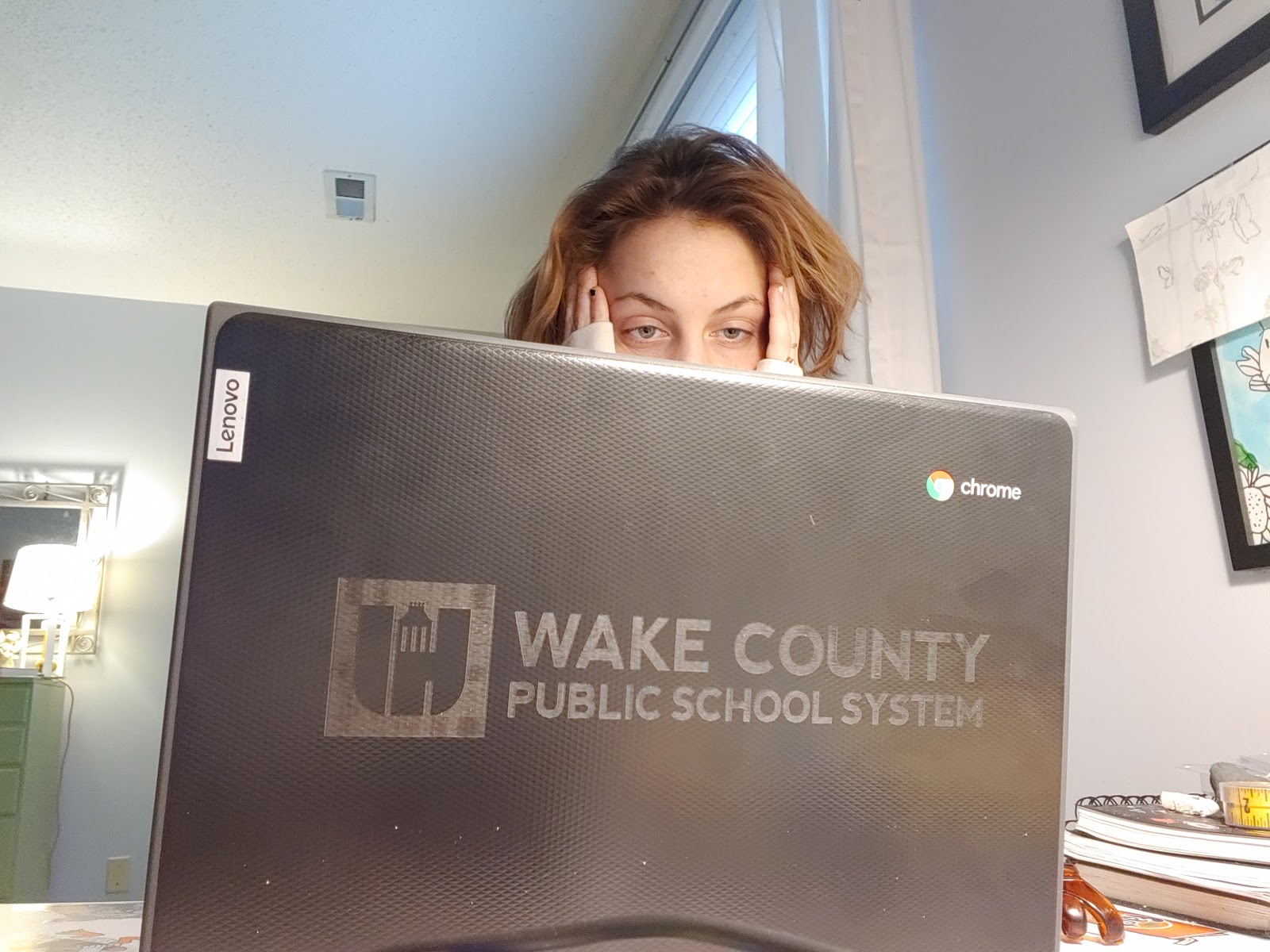Online learning is a new experience for most of the Leesville student body. Some grade levels are adapting better than others, but surprisingly, success is spreading across the board. (Photo courtesy of Ellie Bruno)
As the first semester comes to a close, most of the issues met with virtual learning resolved themselves through experience. However, as lessons continue, teachers are noticing a significant difference in student behaviors among different grade levels. Virtual learning is creating a rift within the student body, and who knows what the lasting results will be.
Adjusting Accordingly
While Leesville had a taste of virtual learning during the Spring 2020 semester, in reality, it was kind of a jumbled mess of trial and error.
Fall presented a much different status: teachers prepared their virtual classrooms, and schools delivered computers to students in need. As for actual teaching style, teachers were able to return to some semblance of normalcy and routine with their lesson plans.
Mr. Argao, a chemistry teacher here at Leesville, delved into his experience with online teaching. “I would say it is still traditional, I still lecture and do examples. When I can, I do live demonstrations instead of telling students to watch a video” said Argao via email.
A math-heavy class like his, though, can be pretty difficult without in-person demonstrations. “Given the time I have, I can’t walk around and see everyone’s work and correct them in real time.”
Argao noticed an interesting difference in his grade levels throughout the first semester, even “adapt[ing] the rigor (difficulty) of the class so that it’s much less than in person”, realizing students are opting for premade notes rather than traditional hand-written ones — even motivation to complete the exercises fell throughout the semester.
Survival of the Oldest
Not only has Argao noticed a steady performance decline, he’s realized there’s a stark difference between his sophomores compared to his juniors and seniors. With more experience under their belt, the upperclassmen are adjusting to the virtual learning environment in stride compared to their younger peers. So, how are these sophomores performing?
“It is a pretty hefty class and for some students, it might be their first B, or lower, in science.
I have more A’s and B’s than ever before. I would say the students who normally would be getting a high B are getting an A in virtual. The C’s and the D’s in virtual would most likely be getting the same grade in person. Mainly it is because of the lack of studying, turning in homework late or not at all, or turning incorrect homework.
Even with the change in difficulty, Argao ran into an unprecedented amount of pushback from his younger students. “I’ve had my share of complaints from them [sophomore students] as if this class was not what they expected in terms of rigor. As I said, usually the students who have had honors biology in spring 2020 were really shocked at first of the rigor of honors chemistry,” said Argao. He even admits that the class is “10 times easier” than in person because of the smaller and shorter assignments.
The Great Divide Might not be so Deep
The greatest difference Argao sees is how honest his upperclassmen are. “When they receive a bad grade they own up. They will straight up tell me they overslept or they didn’t try very hard,” said Argao.
They know what it’s like to ask a teacher for questions and help on topics, something the sophomores may not have experienced in the Spring.
There’s hope however. Instead of raising a hand in class, students are talking in the chat, turning on their cameras, and genuinely engaging in the class. “I believe the ambition is there,” said Argao, who recognizes that most students are thriving in this new environment. It’s all a matter of adaptation, while seemingly archaic in this modern society, is an essential tool in an ever-changing world.
“They will have to learn their weaknesses one day and how to overcome them,” concluded Argao. “Balance is hard, but not impossible. Students really need to learn the difference between what you HAVE to do versus what you WANT to do. Sometimes school work can fall in either category.”

Hi! My name is Ellie and I’m a senior editor, trending editor, and print editor for The Mycenaean. I am also a second degree blackbelt at Triangle’s best karate, floral assistant, and a self-proclaimed starving artist. Just a chaotic libra whose only personality trait is how often she dyes her own hair
